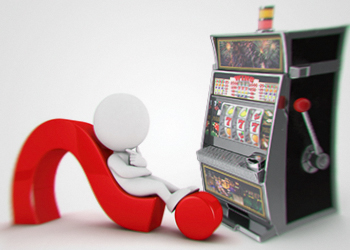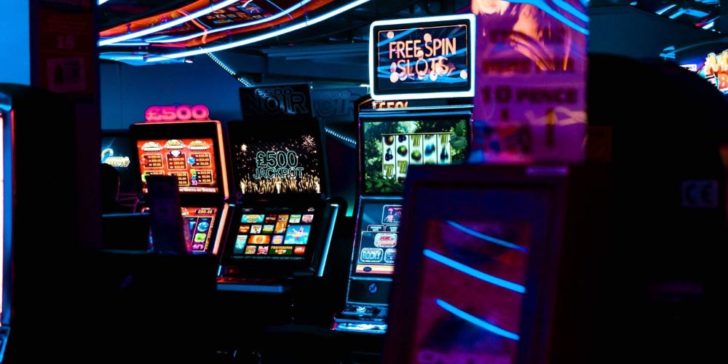When Was Poker Machines Invented
Who Invented The First Poker Machines, level 3 bard spell slots, divine fortune free slots, golden temple slots. Later in the 1970s, the first serious poker strategy books appeared, notably Super/System by Doyle Brunson (ISBN 1-58042-081-8) and Caro's Book of Poker Tells by Mike Caro (ISBN 0-89746-100-2), followed later by The Theory of Poker by David Sklansky (ISBN 1-880685-00-0).
The first slot machine was developed in the United States of America by Charles Fey. It was a very simple game called the Liberty Bell and was an instant hit. In the early 1900's the first slot machines appeared on Australian shores. While they were illegal they were popular with gamblers.
In 1953 an Australian company called Aristocrat saw that the slot machine business was the way of the future and developed their first game known as the Clubman which was designed by Joe Heywood. The Clubman was replaced with the Clubmaster in 1955.
One year later the government of NSW legalized gaming machines in registered clubs. It was this single decision that changed the face of gambling in Australia and around the world forever.
The pokies were quickly a hit with players even though at the time they were quite basic games. It was not until several years later that the first lights were installed in the games.
The next few decades offered not much new in terms of the games. They all had three spinning reels and either one, three or five lines. The jackpots were by today's standards small and the interactivity was limited to pulling the handle and waiting for the reels to stop.
It was not until the mid 1980's when the first video slots rolled off the production lines and were released to the public. This was the biggest development in gaming since Charles Fey had invented the first game.
Not only did the games now have five reels but they also had many more lines and offered additional ways to win such as the chance to win free spin features or a gamble option.
In the early 1990's several Australian States approved the release of poker machines into pubs. This saw a much more widespread availability of the games in Queensland in 1992, South Australia in 1994 and NSW in 1997.
Today no matter where you are, if you walk into a casino you are sure to see whole banks of video slots. From Las Vegas to Sydney the pokies are one of the most, if not the most popular form of gambling.
Online Pokies History
In the early 1990's the first Internet casinos opened and delivered a whole new way of playing pokies. One of the earliest casinos was The Gaming Club who are still in operation today.
While online casinos have been around now for over 20 years it was only in 2004 when Microgaming released Thunderstruck that Australian style pokies became available online. This started a wave of new game releases to where today you have hundreds of online games to choose from.
The latest chapter in the history of poker machines is the move to mobile gaming. With the invention of the smart phone and tablets you can now play and win on the pokies at any time and anywhere.

When Was Poker Machines Invented Made
Where the name 'Pokies' come from?
While there is no documented date of when the term was first used it has become the standard term for video slots in Australia. Advertising for casinos and pubs always calls the games pokies.
It appears to have come from the fact that there was a time when video poker machines or 'Cardies' were in pubs and clubs as well as the slots - they were all called poker machines.
This like most slang was broken down to pokies probably due to people saying things such as 'I'm off to the pub to play the pokies'. Interestingly enough the term appears to have only caught on in Australia as the rest of the world still likes to call them slots or slot machines.
Introduction
The first mechanical slot machine was invented in the late 1800's by a Bavarian imiagrant named Charles Fey (1862-1944) in San Francisco. In order to understand the history of the slot machine though we need to jump back a little in time.
Poker Machines
Before Fey’s invention there were other coin-operated games of chance. The most popular one, invented by Sittman and Pitt of New York, was a 'poker machine' that was similar to a slot machine and used 5 reels with 10 poker cards on each reel. These machines were very profitable and were used in hundreds of locations (mainly in cigar stands) in the 90's (the 1890's that is). The machines paid out prizes, like a free cigar or free drinks, which were distributed manually by an attendant.
Charles Fey
When Charles began building machines, he initially built ones that were similar the popular poker machines and called them by various names, like the 'Duke' and the 'Klondike'. After building a few of them, placing them in locations, and doing very well with them, he then opened a factory in San Francisco to work on his machines full-time.


But Fey wanted to build a machine that would pay out automatically. This wasn't possible at the time due to the difficulty of calculating the vast number of winning combinations of a machine with 5 reels and 10 cards on each reel. So, in 1898, Fey designed a poker machine called the 'Card Bell' machine that retained the card symbols of the earlier poker machines but had only 3 spinning reels and only 5 symbols printed on each reel. The automatic prize-payout allowed the machine to be the first to pay out coins.

The 'Liberty Bell'
About a year later, in 1899, he created the 'Liberty Bell' machine, which added horseshoes and bells to the suit symbols on the reels. Lining up three bells would win the top prize (hence the name). Fey's design became the standard design for slot machines going forward and was so popular that all 3-reel slot machines were referred to as 'Bell Machines'.
Fey rented his machines to saloons and bars and split the profits 50/50. The demand for Liberty Bell slot machines was huge and allowed Fey to monopolize the slot machine market. Many gambling supply manufacturers wanted to buy the manufacturing and distribution rights to the Liberty Bell but Charles Fey didn't want to sell them.
But Fey could not keep up with the demand so in 1907 he partnered with Mills Novelty Company to manufacture a cast-iron machine called the 'Mills Liberty Bell'.
Unfortunately for Fey, patent laws of the time did not protect gaming devices because a Federal Judge ruled the slots could only be used for gambling and had no useful purpose. So a few years later, in 1910, the Mills Novelty Company introduced a slight variation to the Mills Liberty Bell called the 'Operator Bell'. The machines from Mills Novelty were the first to use the fruit symbols like lemons and cherries that you see on some slot machines today.
1910-1933
Part of the growth of slot machines was due the wide open nature of San Francisco during the early 1900's. The climate started to change quickly though in 1909 when San Francisco outlawed all gaming machines. Nevada did the same a year later and the state of California created a statewide ban on slot machines in 1911.
These laws did not have much of an effect on slot machine sales because slot machine manufacturers were able to find ways to alter the games to avoid getting them classified as gambling devices.
For example, the 'Liberty Bell Gum Fruit' model dispensed a package of gum, which allowed the machine to be classified as a vending machine. The Caille Brothers slots created machines that had a Swiss music box located in the bottom of the cabinet so the machine was classified as a musical device. Another popular strategy was to have slot machines dispense items like mints or gum in order to have them classified as vending machines.
Slot machines reached their peak sales during the Great Depression and the lawless days of prohibition, which began in 1919. They were popular in the speakeasies as well as the many respectable businesses that needed the profitable machines in order to stay in business during the tough economic times.
1933-1945
After prohibition ended the government decided to target slot machines since they were looked at as tools for organized crime. Raids began to increase as well as laws prohibiting the possession of slot machines or a sale of a slot machine to an illegal state. Despite these efforts, the popularity of slots machines was difficult to stop and slots were still able to operate in some places.
Post WWII
After World War II, governments started to become friendly to the slot machine industry because it now looked at it as a source of tax revenue.
Computer Technology
When Was Poker Machines Invented Made
In 1963, Bally developed the first electromechanical slot machine, called Money Honey, that used electronic micro-processors to decide the outcome of the game.
The first fully-electronic slot machines were introduced in Las Vegas in 1975. They were built by the Fortune Coin Company and used simulated reels on a monitor. The electronic machines caught on slower than expected because many players did not trust the fairness of the machines. In 1978, the company that would later be known as International Game Technology bought out the Fortune Coin Company.
When Was The First Poker Machines Invented
In 1984, a Norwegian scientist named Inge Telnaes received a patent for a device titled, 'Electronic Gaming Device Utilizing a Random Number Generator for Selecting the Reel Stop Positions.' International Gaming Technology (IGT) bought the patent in 1988 and now all slot manufacturers his technology must license the patent from IGT.
Poker Machines Games
COMMENTS:

Log in to post comments
or Register
When Was Poker Machines Invented The Most
HPG ADMIN on February 27, 2013